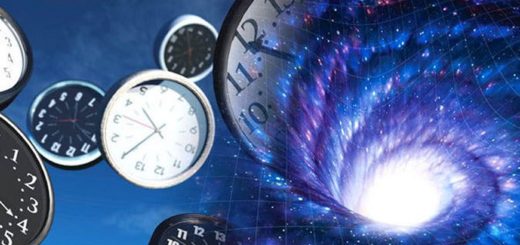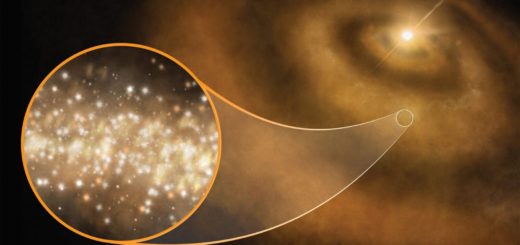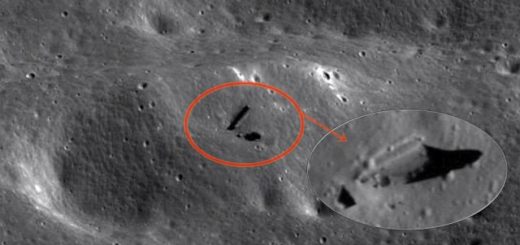Cosmic Mystery – What Happened To Earth’s Second Moon?
– Did Earth once have a second Moon and if so, what happened to it? Did it vanish into open space? Did it collide with another moon? Was Earth formed as a result of this dramatic collision?
Can Earth’s lost second satellite explain why our Moon’s far side looks so different from the one that constantly faces us? It’s time to examine yet another cosmic mystery.

The idea that our planet once had a second Moon goes back far in time.
In 1846, French astronomer Frédéric Petit, director of the Toulouse Observatory announced that he had discovered a second moon in an elliptical orbit around Earth. His claim was soon dismissed by astronomers, but Petit’s moon became a plot point in Jules Verne’s 1870 science fiction novel Around the Moon.
Some years later, in 1898 Dr. Georg Waltemath, astronomer from Hamburg, Germany said that he had located Earth’s second moon as well as a system of tiny moons. His discovery has never been confirmed by the scientific community and his claims were rejected.
American astronomer William Henry Pickering (1858 –1938) studied the possibility of a second moon and suggested that the Moon itself had broken off from Earth.
If we skip forward to more modern times, we learn about an intriguing theory proposed by Erik Asphaug, a planetary scientist at the University of California, Santa Cruz, and Martin Jutzi, at the University of Berne.
According to Asphaug and Jutzi, it is possible Earth did have another moon billions of years ago. These two moons would have co-existed in peaceful harmony for tens of millions of years, long enough for both moons to almost completely solidify.
However, eventually Earth’s gravity cause the two moons to migrate outward and when it happened they collided. The smaller moon would have been destroyed, its remnants coating half of the larger satellite.
Asphaug and Jutzi have run several computer simulations of the collision and they think this is a valid explanation for the odd makeup of the moon.
The visible side of our Moon is dominated by low-lying lava plains, called maria, which contain potassium, rare earth elements and phosphorus, a compendium known as KREEP. The far side, which was first illuminated by human satellites in 1959, is composed of mountainous terrain with a thicker crust.
Other theories have suggested the maria are the result of Earth’s gravity yanking material up from within, leaving the far side unperturbed, or the result of convective action in the moon’s mantle. Asphaug and Jutzi are of a different opinion and maintain that when the departed small moon made impact, on what happens to be the current far side, it smashed the KREEP toward the opposite side.
This is an interesting theory that could explain why we the Moon’s two faces are so different.
Except for the Moon, our planet has also another celestial companion in its vicinity. The object’s name is Cruithne (or 3753 Cruithne) and it’s often referred to as Earth’s “second moon”. One orbit of Cruithne takes almost a year (orbital period: 364.019 days) similar to the Earth and the Moon.
Cruithne was discovered on October 10, 1986 and the asteroid does not go around the Earth, instead it shares the Earth’s orbit. Cruithne seems to dance back and forth and it has a puzzling trajectory.
The asteroid has a very special relationship with our planet and a collision with Earth is not possible. This small object is in orbit around the Sun and at a distance very close to that of the Earth. As observed today, Cruithne’s present trajectory is seriously dominated by Earth’s gravity, and this state will remain for about 5,000 years, but one day in the future this relationship will end and Cruithne will escape.
Cruithne is one of the most peculiar objects in our Solar system.
In 2016, astronomers announced they have spotted a small asteroid in orbit around the Sun. Designated 2016 HO3, the asteroid has been a stable quasi-satellite of Earth for almost a century, and it will continue to follow this pattern as Earth’s companion for centuries to come.
“The asteroid’s loops around Earth drift a little ahead or behind from year to year, but when they drift too far forward or backward, Earth’s gravity is just strong enough to reverse the drift and hold onto the asteroid so that it never wanders farther away than about 100 times the distance of the moon.
The same effect also prevents the asteroid from approaching much closer than about 38 times the distance of the moon. In effect, this small asteroid is caught in a little dance with Earth,” Paul Chodas, manager of NASA’s Center for Near-Earth Object (NEO) explained.
Asteroid 2016 HO3 is too distant to be considered a true satellite of our planet, but it is the best and most stable example to date of a near-Earth companion, or “quasi-satellite.”
So, the mystery of our second Moon remains unsolved, but as you’ve just seen there are theories that could cast some light on this subject. Cosmos is fantastic and full of secrets we are slowly trying to unravel.
Written by Kevin Montana – MessageToEagle.com Staff Writer



 Creators of mankind
Creators of mankind Description of “Tall white aliens”
Description of “Tall white aliens” Where they came from?
Where they came from? About hostile civilizations
About hostile civilizations The war for the Earth
The war for the Earth “Tall white aliens” about eternal life
“Tall white aliens” about eternal life Video: “Nordic aliens”
Video: “Nordic aliens” Aliens
Aliens Alien encounters
Alien encounters The aliens base
The aliens base UFO
UFO Technology UFO
Technology UFO Underground civilization
Underground civilization Ancient alien artifacts
Ancient alien artifacts Military and UFO
Military and UFO Mysteries and hypotheses
Mysteries and hypotheses Scientific facts
Scientific facts


















